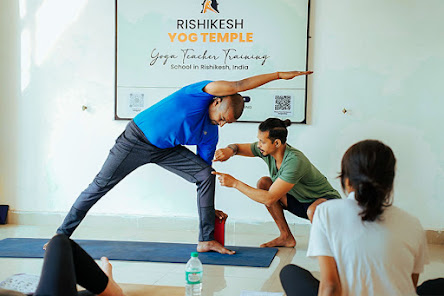The Role of Anatomy and Physiology in Yoga Teacher Training
Anatomy and physiology play a crucial role in yoga teacher training as they provide a solid foundation for understanding the physical and physiological aspects of the human body, which are essential for safe and effective yoga practice. Here are some key points on how anatomy and physiology contribute to yoga teacher training:
Understanding the Human Body: As a yoga teacher, it's essential to have a thorough understanding of the human body's structure and how it functions. This includes learning about bones, muscles, joints, organs, and other systems of the body, as well as their roles and interactions during yoga practice. This knowledge helps yoga teachers to guide their students safely and effectively in yoga postures (asanas) while minimizing the risk of injury.
Safety and Alignment: Proper alignment is crucial in yoga to avoid strain or injury to the body. Understanding anatomy and physiology helps yoga teachers to teach proper alignment in yoga postures, ensuring that students practice safely and avoid common pitfalls or misalignments that could lead to injury. It also allows them to modify postures for students with special considerations, such as injuries, health conditions, or physical limitations.
Breath and Pranayama: Breathing techniques, known as pranayama, are an integral part of yoga practice. Knowledge of anatomy and physiology enables yoga teachers to understand the mechanics of breathing, the role of the respiratory system, and how different pranayama techniques affect the body and mind. This understanding helps them guide students in proper breathwork techniques to enhance their practice and overall well-being.
Body Awareness and Adjustments: Yoga teachers often provide physical adjustments or assistance to their students to help them refine their postures or deepen their practice. An understanding of anatomy and physiology helps yoga teachers to have a clear understanding of the body's structure and limitations, allowing them to provide safe and effective adjustments while respecting students' individual needs and boundaries.
Modifications for Special Populations: Yoga is practiced by people of various ages, fitness levels, and health conditions. An understanding of anatomy and physiology equips yoga teachers with the knowledge to modify yoga practices for special populations such as pregnant women, seniors, individuals with chronic conditions, or those recovering from injuries. This allows them to create inclusive and accessible classes that cater to the unique needs of different individuals.
Professionalism and Communication: Lastly, anatomy and physiology knowledge helps yoga teachers communicate effectively with students, other healthcare professionals, and potential clients. It establishes credibility, professionalism, and trust as yoga teachers can explain the benefits, risks, and limitations of different practices based on a sound understanding of the human body's anatomy and physiology.
Anatomy and Physiology are integral components of yoga teacher training as they provide a solid foundation for safe and effective yoga practice, proper alignment, breathwork, adjustments, modifications for special populations, and professional communication. A thorough understanding of the human body's structure and function allows yoga teachers to guide their students with confidence and ensure a safe and inclusive yoga practice for all.




Comments
Post a Comment